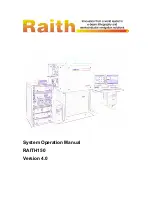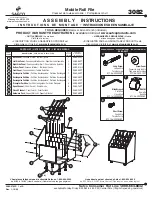
RTC
®
5 PC Interface Board
Rev. 1.9 e
8 Advanced Functions for Scan Head and Laser Control
189
innovators for industry
command, then the galvanometer scanners will
already be at the correct location after the inter-
mediate motion (here, no jump is required after
the interruption).
With
Processing-on-the-fly-corrected coordinate values
exceed the real image field during a long interme-
diate motion. To avoid this, it might make sense
to switch off Processing-on-the-fly correction
before the motion (e.g. via
– see
; the galvanometer
scanners will then remain stationary). To switch
correction back on after the intermediate motion,
you can use the command
instead of
(or
). These commands
don’t reset the encoders, but instead recalculate
the last Processing-on-the-fly-uncorrected coordi-
nate values so that the Processing-on-the-fly-
corrected output matches the current output. If
resuming correction via these commands results
in an error (e.g. because the current recalculated
coordinate values would now exceed the 24-bit
virtual image field), then an error bit will get set
that is queryable via
(bit # 9
= 1). If, during list processing, it’s necessary to
immediately respond to this error, then you can
call the list command
possibly jump to an error-handling routine.
8.7.8 Encoder Resets
Many encoder-based Processing-on-the-fly applica-
tions (e.g. a conveyor belt continuously traveling in
the same direction) need to occasionally reset the
encoders (e.g. after an interruption via
, before a new marking sequence
etc.). For this, you can integrate Processing-on-the-fly
reactivations into your lists via
or
In contrary, encoder-based Processing-on-the-fly
applications for continuous marking (e.g. using an XY
stage) should usually retain the relation between
encoder values and absolute positions of the XY
translation stage. For this purpose, you should use
the
command to activate Processing-on-
the-fly correction. Before a long interruption (via
etc.), you can then deactivate
Processing-on-the-fly correction with
. And
after the interruption you could use the command
to resume correction (also see
chapter 8.7.4 "Compensation of 2D Motions",
page 184
and
chapter 8.7.7 "Synchronization of
Processing-on-the-fly Applications", page 188
Processing-on-the-fly correction can also be resumed
with
, but some functions will no
longer be available, particularly those necessary for
the relation between current encoder values and
absolute XY stage positions (see the
Encoder Compensation for XY Stages" on page 184
).
















































